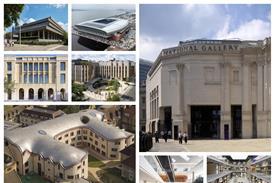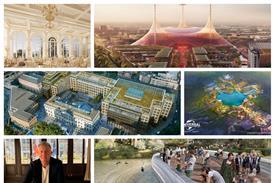- Home
- Intelligence for Architects
- Subscribe
- Jobs
- Events

2025 events calendar Explore now 
Keep up to date
Find out more
- Programmes
- CPD
- More from navigation items
Building Study: Auckland Tower, County Durham, by Niall McLaughlin

The architect has given Auckland Castle a timber tower resembling a siege engine – but while it’s a permanent fixture there’s nothing static about it
The quaint County Durham market town of Bishop Auckland probably has two principal claims to fame. The first is that legendary comic Stan Laurel of Laurel and Hardy went to grammar school there, enabling the town to become one of legions across northern England that somehow lay claim to the formative years of the British half of the iconic comedy duo.
And the second, and significantly more architecturally relevant, historic fact is that it is home to grade I-listed Auckland Castle. Auckland Castle rarely features on the roll call of famous English fortresses that typically includes more celebrated examples like Windsor and Warwick. But it was once one of the most important political and religious sites in the UK.
With origins dating back to the 12th century but heavily “gothicked” and romanticised by James “the Destroyer” Wyatt in the late 18th century, up until 2010 Auckland Castle was home to those bearing the illustrious title of prince-bishops of Durham. In days of yore the prince-bishops of Durham enjoyed fabulous wealth and power, second only to the monarch. They enjoyed these privileges because their northern position gave them a strategic role in protecting the Crown from marauding Scottish attacks and, in return, the prince-bishops were allowed to raise taxes, establish laws and essentially run north-eastern England like a semi-autonomous episcopal fiefdom. Consequently, Auckland Castle’s chapel is the largest private chapel in Europe.
…
This is premium content.
Only logged in subscribers have access to it.
Login or SUBSCRIBE to view this story

Existing subscriber? LOGIN
A subscription to Building Design will provide:
- Unlimited architecture news from around the UK
- Reviews of the latest buildings from all corners of the world
- Full access to all our online archives
- PLUS you will receive a digital copy of WA100 worth over £45.
Subscribe now for unlimited access.
Alternatively REGISTER for free access on selected stories and sign up for email alerts






